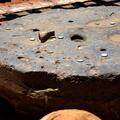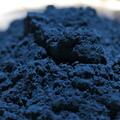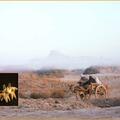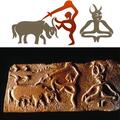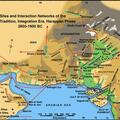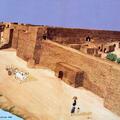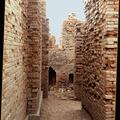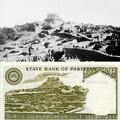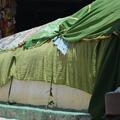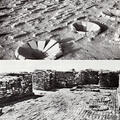Harappa Mounds Today #2
A collection of photographs of the Harappan Mounds in March 2013.
Image A: A circular grey limestone slab found at Harappa and possibly dated to the post Harappan period. It has been identified by local communities as the gem from the finger ring of Baba Noor Shah who is buried in the nearby tomb. It is said to have turned to stone and became very large when someone tried to rob it from his tomb. Visitors toss coins and currency notes as well as rice grains as offerings to the saint. More than 15,000 people live in the modern town of Harappa which is situated on part of the ancient mound.

